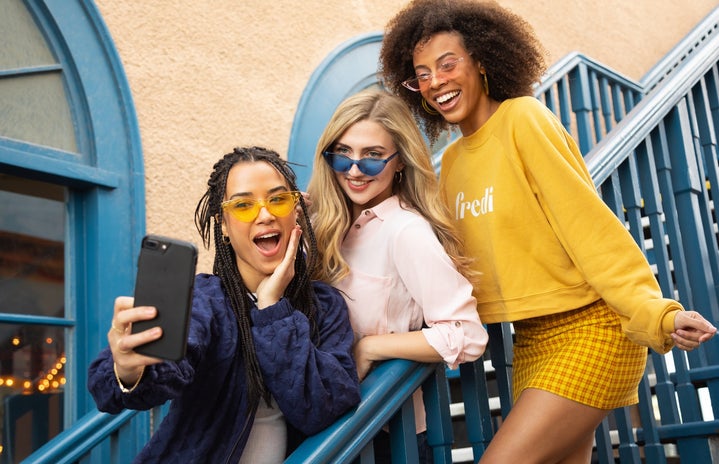Social media sells itself as an online tool with the sole purpose of connection and entertainment. However, as advancements to these platforms continue, the integration and partnerships of one online platform with another have formed a blended experience. Through influencers, online branding, targeted advertising/data mining, etc., today’s online user is getting a lot more than they originally bargained for, often without being aware of it. The question is when has it gone too far? When have social media platforms gone too deeply into consumer culture to continue to sell themselves as sites for pure social networking, and not the multifunctional platforms they have become?
As businesses have begun to partner with platforms, a new marketplace has emerged, and with it new selling strategies. The key benefit of using social media as a selling strategy is companies can now build ‘connections’ and ‘relationships’ with their buyers. As well, they can build relationships with influencers who will curate images and videos that sell their product being used in ‘real-time.’ Since this strategy is one that consists of a much more personal relationship between consumer and producer, people often forget that the company they started following for its funny videos or aesthetic posts are not one single person- but a multi-person team using the platform as a marketing strategy.
Influencers add a whole new dynamic to this personable relationship that companies are trying to sell. Unlike what I mentioned above, they are a single person- however, their end goals are not much different. These ‘real’ people, who are not billboard models or movie stars, come across as more relatable and trustworthy. You can follow their daily lives through specifically curated photos highlighting what they want you to see. Unlike on a movie screen or an advertisement in a magazine, you can see the product being used from start to finish. For example, if it is a hair care product they are trying to show off, they may show short snippets of their bedhead, to them in the shower, to them using the product and styling their hair, to finally a snapshot of the gorgeous blowout you want to achieve at home. Even though this is put on, set up and strategized like a marketing campaign, it feels more personable to see these people from start to finish on a platform you are also interacting with and using. Thus, making the product feel like a tool you ‘must’ use and makes the person selling it to be just another average Joe sharing their review of a product online.
Another tool social media gives us to be exploited by companies/influencers is the ability to visually see how many other users follow them or like their photos. Thus, allowing yourself to be sold on what is ‘popular’ by justifying how many other people are also viewing and interacting with the same content. Furthermore, popular influencers or people deemed to have a strong enough social status in the physical world are allotted a blue checkmark awarding them ‘verification’; this lets the users know who is ‘worth’ listening to and deemed important and who is not. However, exactly like billboard models, online influencers are being sponsored to sell the brand they are showcasing. Whether it is through free products, opportunities or monetary funds- they are still being paid to create and use this easily gained ‘trust’ in order to sell.
Instagram accidentally removed being able to see how many likes a user has on a photo back in 2021. While they sold it as an intentional move to ‘depressurize people’s experience’ online, it was later discovered to be an accidental move as admitted by a spokesman for Instagram. Influencers and their brand deals suffered due to this, and a few weeks later they brought it back as an option to have them turned on again. While the ability to have this option was nice for users who wanted to feel less pressure on their online experience, overall it showcased how much of the online community was now curated to the interests of businesses and influencers- not the general public.
Separating from influencers, social media channels have now built themselves up around brands with the help of targeted advertising and data mining. They can gain the insight to their audience’s current likes and dislikes. They can test and try out new visual cues to see what sticks and what does not with buyers. Not only can they sell their product through multiple platforms, but they are learning directly from the buyer on how to sell to them. Furthermore, due to your own online data you are essentially working for the platforms you are using. When agreeing to use a platform- whether it be Facebook, Instagram, Snapchat or TikTok- you are simultaneously agreeing to let these platforms sell your data to third-party companies. This data is used for research and then sold back to the platform in order to specifically target each user with ads and products that fit what they are interacting with online.
When does this modernized, mediated business plan become manipulation? The majority of these online sites require their users to be only 13 years old, and at that age they do not understand the full capacity of online spaces, let alone how to tell when they are being manipulated into buying something. When our generation was in elementary school, we were often lectured by police or other officials telling us what not to post online, who to connect with and when situations are unsafe. However, no one teaches users of any age how to learn to watch out for online manipulation by the actual platform itself. No one teaches online users what those 30 pages of fine print mean or how to make sense of where our information is going. Should tactics and lessons be extended, even partially, when it comes to a business’s interference with our online experience? Should online users be more clearly aware of the consumer market’s role in our online experience? Maybe not to the extent of what we were taught regarding safety, but in any regard at all? It is no secret that we live in a digital age. Better yet, it is a safe assumption to say this digital age is not going anywhere for a long time, if at all. For that reason- should we not all have a better understanding of the platforms we are consistently using?


